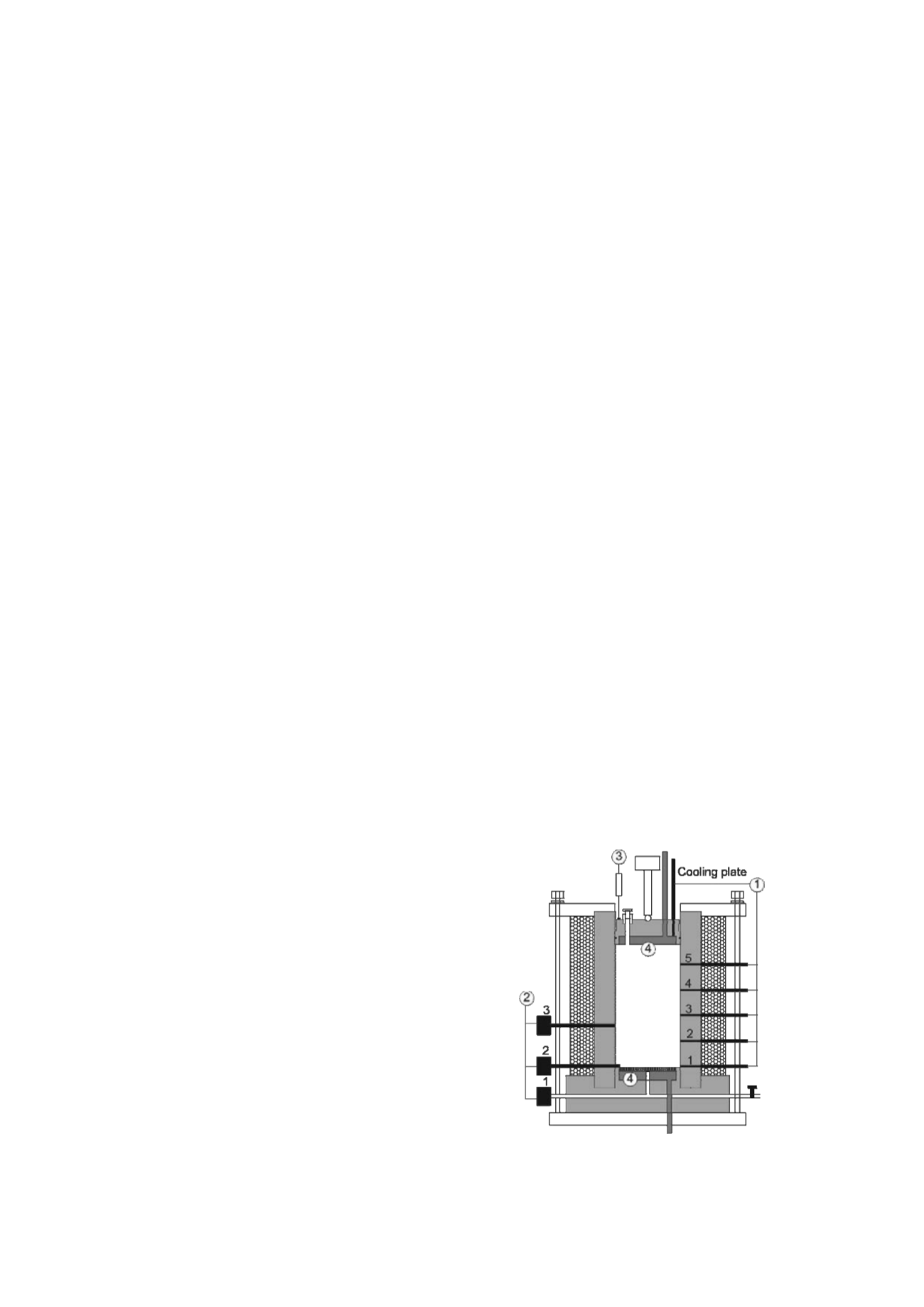
337
Proceedings of the 18
th
International Conference on Soil Mechanics and Geotechnical Engineering, Paris 2013
1
Mechanisms During Formation of Ice Lenses and Suction in Freezing Soils
Les mécanismes de la formation des lentilles de glace et de succion au cours de la congélation
du sol
Herzog F., Boley C.
Universität der Bundeswehr, Munich, Germany
ABSTRACT: In the course of frost penetration in the soil the formation of ice lenses may result under certain boundary conditions.
Due to the development of suction, water is drawn from unfrozen parts to the frost line. In this paper an apparatus for conducting
experiments is presented which serves to determine the ice lens building process as well as the suction. Within the scope of the test
program different dependencies are analyzed for understanding the mechanisms of suction development and for making predictions
on the formation of ice lenses possible. The test results show the connection between suction development and ice lens formation. It
also shows that even without external water supply reallocation processes take place.
RÉSUMÉ : La pénétration du givre dans le sol contribue, sous certaines conditions limites, à la formation de lentilles de glace. A
cause du développement du processus de succion, l’eau des parties non gelées migre vers le front de gel. Cet article présente un centre
d’essai, qui permet, d’une part, d’effectuer les tests sur la formation de lentilles de glace et, d’autre part, d’analyser le processus de
succion. Dans le cadre du programme expérimental, plusieurs dépendances ont été analysées afin de mieux comprendre les
mécanismes de formation de succion et d’améliorer les prédictions sur la formation de lentilles de glace. Les résultats de ses
expériences montrent un lien entre le développement du processus de succion et la formation des lentilles de gel, et que, sans apport
supplémentaire d’eau en dehors de l’échantillon, le processus de migration peut avoir lieu.
KEYWORDS: frozen soil, ice lenses, suction, frost heave
1 INTRODUCTION
In the course of artificial and natural ground freezing, when the
frost penetrates into the ground, in many cases, frost heaves
occur. If they are not well controlled (Kellner et all 2006) they
may lead to damages to buildings that are close by. Thus, the
objective is to predict frost heaves and preferably to minimize
them.
Depending on the existing boundary conditions, the heaves
are caused for two different reasons. Generally, there is an
increase in volume of 9 % caused by the transformation of
water into ice. Moreover, ice lenses may develop for fine-
grained soils. During the frost penetration into the ground water
migrates from the unfrozen areas of the soil towards the frost
line. There, the water is accumulated in layers of pure ice that
splits the ground. The reason for the water migration is a suction
which can be measured when the water migration is impeded.
The fact that the fundamental processes may change the
thawed soil properties makes the prediction of the expected
frost heaves and their potential minimization even more
substantial.
In the past, many experiments were conducted to investigate
different influences on the formation of ice lenses (Konrad and
Morgenstern 1980, 1982). Until now, the assessment of the frost
susceptibility of a soil was based on the particle size distribution
and the plastic soil properties but did not take into account the
influences of the mineralogy or the ion concentration of the pore
water. Nor had the analysis of the suction as cause of the water
migration to the ice lens been paid particular attention.
However, in recent research the influence of overburden
pressure has been investigated (Kellner 2008) with its influence
on pore water development due to freezing.
Nevertheless, the underlying mechanisms of suction and
their influencing factors are not yet finally resolved. For this
reason freezing tests are run at our institute to investigate the
development of ice lenses and determine the suction. Our
institute has developed a model of osmotic pressure (Zou and
Boley 2008) to describe the mechanisms. Based on these tests,
the model can be verified and improved. The freezing tests are
presented in the following chapters.
2 EXPERIMENTAL APPARATUS AND PROCEDURE
Figure 1 shows the test apparatus to run freezing tests
investigating the development of ice lenses as well as
determining the suction.
Figure 1. Schematic of freezing cell: (1) temperature sensors 1-5 and
temperature sensor at upper cooling plate, (2) pore water pressure
transducer, (3) displacement transducer, (4) cooling plate


